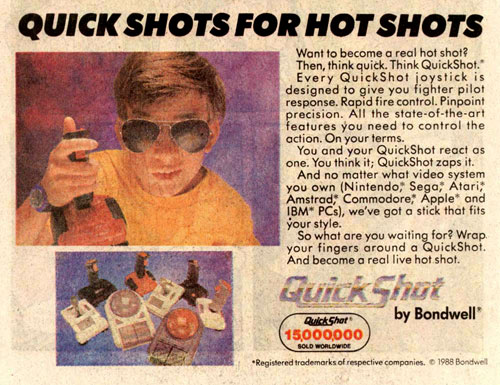Quickshot
QuickShot was a series of joystick models from the company Spectravideo. Towards the end of the 1980s, QuickShot joysticks were produced by Bondwell. Most QuickShot joysticks are well-known for their characteristic clicking sound when moving the stick. This noise results from the use of spring-loaded switches, which are also the main source of problems with these joysticks as they are fairly fragile. This puts them at a disadvantage compared to other joysticks. With the rising spread of PCs in the late 1980s and early 1990s, the product range was expanded to include MIDI keyboards and computer mice.
The QuickShot I and II models were often copied by other manufacturers, reflecting their popularity. QuickShot joysticks were the most popular joysticks after the Competition Pro; according to the manufacturer's data, 42 million QuickShot joysticks were sold until 1999.
Models[edit | edit source]
QuickShot I - 1982[edit | edit source]
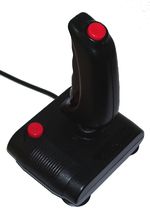
A low-priced joystick which featured an ergonomically-shaped handle with a top-mounted fire button and a second fire button (electrically identical to the top button) mounted on the base. This model was quite popular due to its low price and preciseness without a notchy feel. The disadvantage of this model is its relative lack of robustness, due to its inexpensive construction and use of dome switches (similar to those used in the Atari CX40 joystick).
QuickShot II - 1983[edit | edit source]
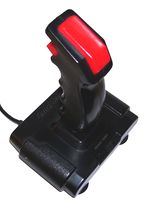
The QuickShot II introduced a more comfortable handle featuring a trigger button and top-mounted fire button. This model also added auto-fire, activated by a switch on the base.
QuickShot II Plus - 1984[edit | edit source]
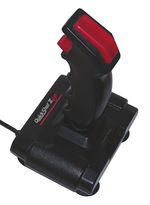
The QuickShot II Plus is mostly the same as the QuickShot II, but replaces the dome switches with spring-loaded switches.
QuickShot II Turbo - 1985[edit | edit source]
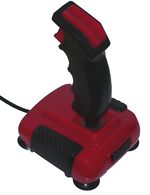
The QuickShot II Turbo is functionally the same as the QuickShot II Plus and shares the same handle, but has a redesigned base. The base is now molded in red plastic and has black handgrips on each side. The auto-fire switch now features a setting which allows for compatibility with the Amstrad CPC series of computers. This joystick was also sold under the Sigma label.
QuickShot III - 1983[edit | edit source]
The QuickShot III was made for use with the ColecoVision, and features a numeric keypad along with two independent buttons. It is compatible with the C64 and other systems which use Atari-compatible controllers, but the keypad and second fire button will not function.
QuickShot IV - 1983[edit | edit source]
The QuickShot IV is a variation of the QuickShot I and features three swappable joystick handles, each one intended for different types of games.
QuickShot V[edit | edit source]
The QuickShot V is similar to the QuickShot III and is intended for the MSX computers. The keypad from the QuickShot III has been replaced with an oversized fire button.
QuickShot VII Joycard[edit | edit source]
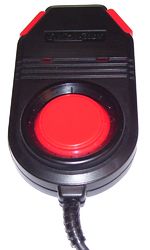
The QuickShot VII is a type of joypad with a thumb-operated directional pad. The fire buttons are controlled with the thumb or the index finger of the other hand. Both fire buttons are equipped with auto-fire which cannot be switched off. Two red LEDs flash with the pulse of the auto-fire when keeping either fire button pressed.
The PCB uses four metal prongs for the directional pad contacts and two dome switches (as used in the QuickShot I and II) for the fire buttons.
QuickShot IX Joyball - 1985[edit | edit source]
The QuickShot IX appears to be a trackball controller, but in actuality it functions like a normal joystick. The "trackball" is actually a large dome which can be rocked in eight directions, and has two large fire buttons near the dome. The QuickShot IX uses microswitches and was molded in beige plastic with gray fire buttons. The QuickShot IX also features a switch so it can be used by either left-handed or right-handed players.
Under the Sigma label, the same model was sold in the black/red color scheme.
Miscellaneous[edit | edit source]
